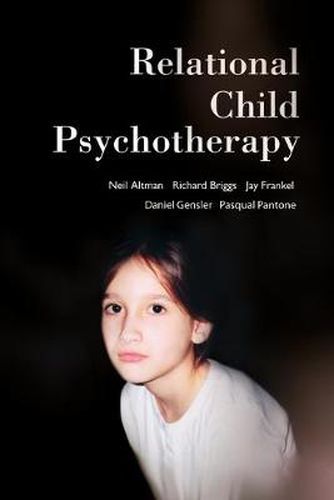Readings Newsletter
Become a Readings Member to make your shopping experience even easier.
Sign in or sign up for free!
You’re not far away from qualifying for FREE standard shipping within Australia
You’ve qualified for FREE standard shipping within Australia
The cart is loading…






This title is printed to order. This book may have been self-published. If so, we cannot guarantee the quality of the content. In the main most books will have gone through the editing process however some may not. We therefore suggest that you be aware of this before ordering this book. If in doubt check either the author or publisher’s details as we are unable to accept any returns unless they are faulty. Please contact us if you have any questions.
The relational and the developmental point of view have never been brought together in an adequate way. This up-to-date scholarly, yet practical, integration opens a new vista within relational psychoanalysis and pioneers a fresh approach in the psychoanalytic treatment of children and adolescents. It is a work of great and lasting value to the field.
-Peter Fonagy
Child therapists practicing today are faced with the challenge of developing a coherent theory and technique while drawing on a number of diverse traditions as disparate as psychoanalysis, behavior therapy, and family systems theory. This diversity presents child therapists with a rich background, but it also presents a formidable complexity to be integrated into their therapeutic work.
This book develops such an integration, offering a complete overview of issues currently being addressed by clinicians and theoreticians, and exploring various relational models and their implications for treatment. The authors bring to light the critical issues of clinical practice with children and offer powerful new models for child psychotherapists.
The problems and strategies for approaching the clinical relationship between child and therapist, as well as that between parent and therapist, are examined in depth. The authors also explore the clinical setting versus the role of the therapist in the extra-clinical context of a child’s life, the therapeutic aspects of play, and the unique behaviors of children manifested in the therapeutic environment.
$9.00 standard shipping within Australia
FREE standard shipping within Australia for orders over $100.00
Express & International shipping calculated at checkout
This title is printed to order. This book may have been self-published. If so, we cannot guarantee the quality of the content. In the main most books will have gone through the editing process however some may not. We therefore suggest that you be aware of this before ordering this book. If in doubt check either the author or publisher’s details as we are unable to accept any returns unless they are faulty. Please contact us if you have any questions.
The relational and the developmental point of view have never been brought together in an adequate way. This up-to-date scholarly, yet practical, integration opens a new vista within relational psychoanalysis and pioneers a fresh approach in the psychoanalytic treatment of children and adolescents. It is a work of great and lasting value to the field.
-Peter Fonagy
Child therapists practicing today are faced with the challenge of developing a coherent theory and technique while drawing on a number of diverse traditions as disparate as psychoanalysis, behavior therapy, and family systems theory. This diversity presents child therapists with a rich background, but it also presents a formidable complexity to be integrated into their therapeutic work.
This book develops such an integration, offering a complete overview of issues currently being addressed by clinicians and theoreticians, and exploring various relational models and their implications for treatment. The authors bring to light the critical issues of clinical practice with children and offer powerful new models for child psychotherapists.
The problems and strategies for approaching the clinical relationship between child and therapist, as well as that between parent and therapist, are examined in depth. The authors also explore the clinical setting versus the role of the therapist in the extra-clinical context of a child’s life, the therapeutic aspects of play, and the unique behaviors of children manifested in the therapeutic environment.